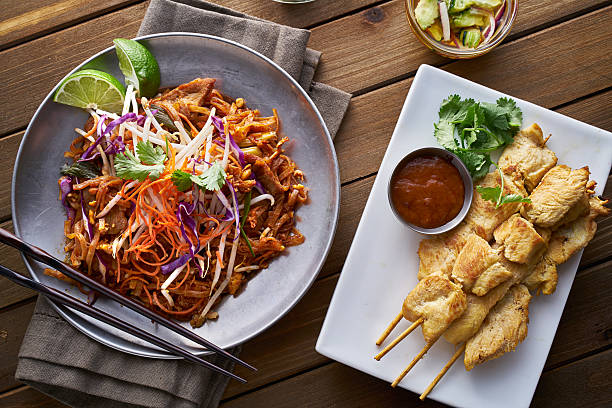Thai cuisine is a symphony of flavors—sweet, sour, spicy, and savory—all harmoniously blended to create dishes that are as vibrant as the country itself. From bustling street food stalls to elegant fine dining restaurants, Thailand offers a culinary journey that delights every palate. In this guide, we’ll take you through the essence of Thai cuisine, exploring its iconic dishes, regional specialties, street food culture, and tips for savoring the best of Thailand’s food scene.
The Essence of Thai Cuisine
Thai food is known for its bold flavors and fresh ingredients. The cuisine is built on a balance of five key tastes:
- Sweet: From palm sugar to coconut milk.
- Sour: Lime, tamarind, and green mango.
- Spicy: Fresh chilies and chili pastes.
- Salty: Fish sauce and soy sauce.
- Bitter: Bitter melon and herbs like cilantro.
This balance creates dishes that are complex, flavorful, and unforgettable.
Iconic Thai Dishes You Must Try
No trip to Thailand is complete without indulging in these classic dishes:
Pad Thai
- What It Is: Stir-fried rice noodles with eggs, tofu, shrimp, and a tangy tamarind sauce.
- Where to Try: Street food stalls in Bangkok, especially Thip Samai Pad Thai.
Tom Yum Goong
- What It Is: A hot and sour soup with shrimp, lemongrass, kaffir lime leaves, and chili.
- Where to Try: Local restaurants nationwide, or Pee Aor Tom Yum Noodle in Bangkok.
Som Tum (Green Papaya Salad)
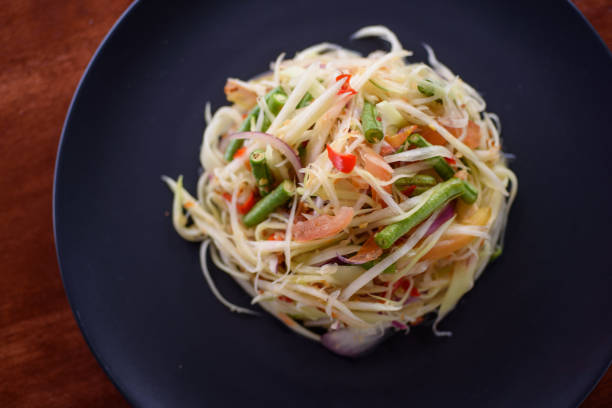
- What It Is: A spicy salad made with shredded green papaya, tomatoes, green beans, and peanuts.
- Where to Try: Street food vendors in northeastern Thailand (Isaan region).
Massaman Curry
- What It Is: A rich, fragrant curry with Muslim origins, made with coconut milk, potatoes, and tender meat.
- Where to Try: Southern Thailand, especially in Phuket and Krabi.
Gaeng Keow Wan Gai (Green Curry with Chicken)
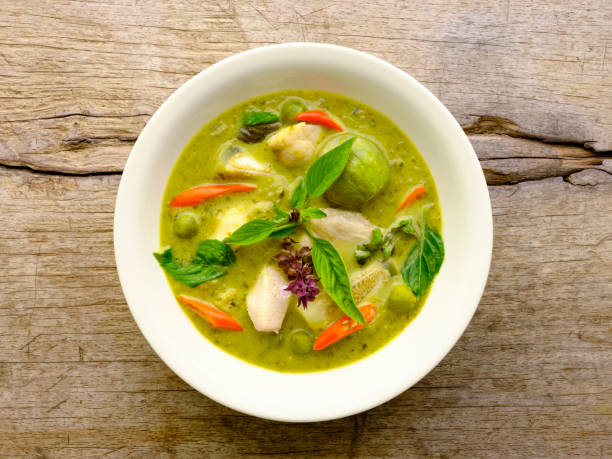
Where to Try: Local eateries across Thailand.
What It Is: A creamy, spicy curry made with green chili paste, coconut milk, and chicken.
Street Food: The Heart of Thai Cuisine
Thailand’s street food scene is legendary, offering an array of affordable and delicious dishes. Here are some must-try street foods:
Moo Ping (Grilled Pork Skewers)
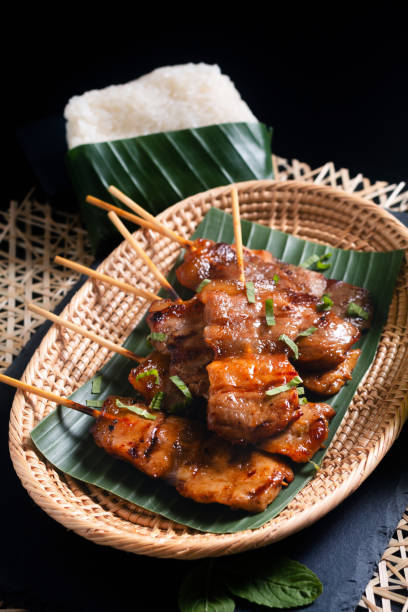
- What It Is: Marinated pork skewers grilled to perfection and served with sticky rice.
- Where to Try: Street food stalls in Bangkok and Chiang Mai.
Khao Niew Mamuang (Mango Sticky Rice)
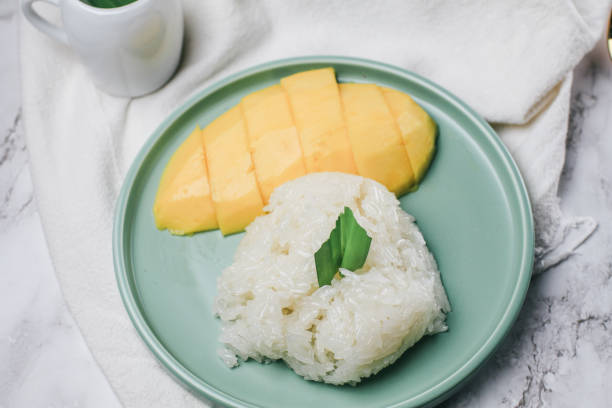
- What It Is: Sweet, ripe mango served with sticky rice and coconut milk.
- Where to Try: Night markets and dessert stalls nationwide.
Gai Tod (Thai Fried Chicken)
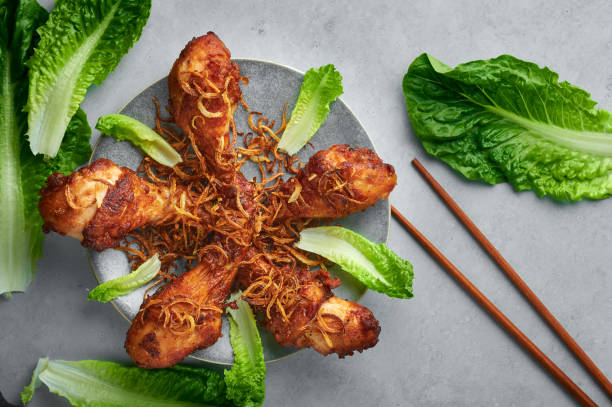
- What It Is: Crispy, flavorful fried chicken often served with sticky rice and sweet chili sauce.
- Where to Try: Street food vendors in Bangkok’s Chinatown.
Roti Gluay (Banana Roti)
Where to Try: Street food stalls in tourist areas like Phuket and Krabi.
What It Is: A sweet, crispy pancake filled with bananas and drizzled with condensed milk.
Regional Specialties: A Culinary Tour of Thailand
Thailand’s diverse regions each have their own unique culinary traditions.
Northern Thailand
- Khao Soi: A creamy coconut curry noodle soup topped with crispy noodles.
- Sai Oua: Spicy northern Thai sausage flavored with herbs and chilies.
Northeastern Thailand (Isaan)
- Larb: A spicy minced meat salad with herbs, lime, and toasted rice.
- Gai Yang: Grilled chicken marinated in a flavorful mix of garlic, lemongrass, and fish sauce.
Central Thailand
- Pad See Ew: Stir-fried flat rice noodles with soy sauce, eggs, and Chinese broccoli.
- Khao Man Gai: Hainanese-style chicken rice, a simple yet flavorful dish.
Southern Thailand
Khanom Jeen: Thin rice noodles served with a variety of curries and fresh vegetables.
Gaeng Som: A sour and spicy fish curry with turmeric and tamarind.
Thai Desserts: A Sweet Finale
Thai desserts are a delightful blend of sweet, creamy, and refreshing flavors.
Tub Tim Grob (Red Rubies)
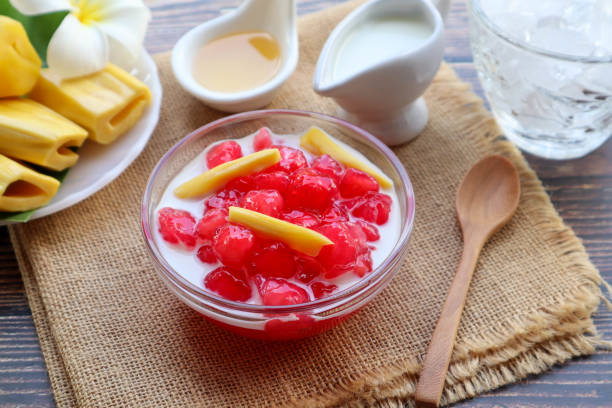
- What It Is: Water chestnuts coated in red tapioca flour, served with coconut milk and crushed ice.
Khanom Chan (Layered Coconut Pudding)
- What It Is: A multi-layered dessert made with coconut milk, pandan, and rice flour.
Bua Loy (Colorful Rice Balls in Coconut Milk)
What It Is: Soft rice flour balls in sweet coconut milk, often flavored with pandan or taro.
Thai Beverages: Quench Your Thirst
Thailand’s drinks are as flavorful as its food.
Cha Yen (Thai Iced Tea)
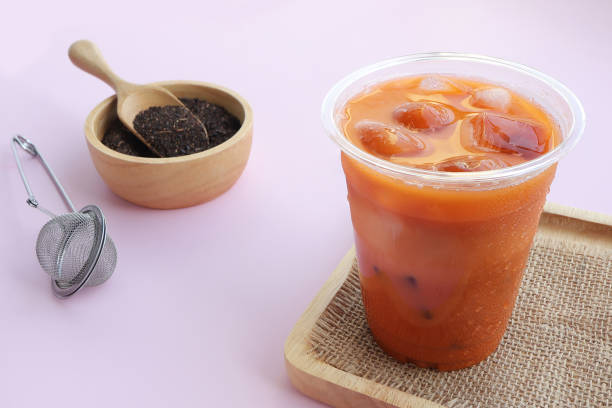
- What It Is: A sweet, creamy tea made with condensed milk and served over ice.
Nam Manao (Lime Juice)
- What It Is: A refreshing drink made with fresh lime juice, sugar, and soda water.
Coconut Water
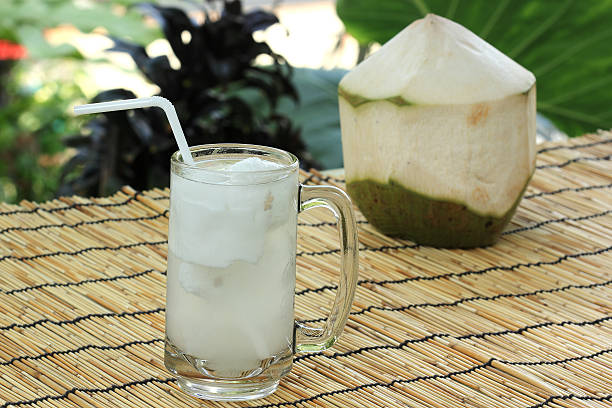
What It Is: Fresh coconut water, straight from the coconut, is a hydrating and delicious treat.
Tips for Enjoying Thai Cuisine
Take a Cooking Class: Learn to make your favorite Thai dishes at home by joining a cooking class in Bangkok, Chiang Mai, or Phuket.
Start Mild: If you’re not used to spicy food, ask for “mai pet” (not spicy) or “pet nit noi” (a little spicy).
Eat Like a Local: Use a spoon and fork, or your hands for sticky rice. Chopsticks are typically used for noodle dishes.
Explore Street Food: Don’t be afraid to try street food—it’s often the most authentic and delicious.
Must-Visit Food Destinations in Thailand
- Bangkok: The street food capital of the world, with iconic spots like Yaowarat (Chinatown) and Chatuchak Market.
- Chiang Mai: Known for its northern Thai specialties and vibrant night markets.
- Phuket: A hub for seafood lovers, with fresh catches served daily.
- Isaan Region: The best place to try spicy, flavorful dishes like larb and som tum.
Conclusion: A Culinary Journey Through Thailand
Thai cuisine is more than just food—it’s an experience that engages all your senses. From the bustling streets of Bangkok to the serene beaches of Phuket, every bite tells a story of tradition, culture, and passion. Whether you’re savoring a bowl of Tom Yum Goong, indulging in Mango Sticky Rice, or exploring the vibrant street food scene, Thailand’s culinary offerings will leave you craving more. So pack your appetite and embark on a food lover’s adventure in the Land of Smiles!

